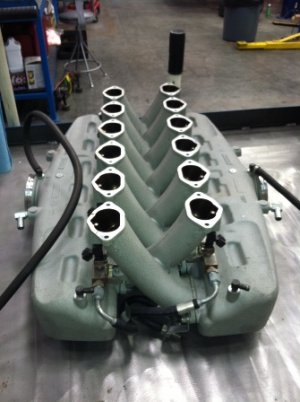Thanks!
When the S2000 came out, Honda wrote this about how they designed the intake manifold for its inline four cylinder engine:
For the F20C engine, an approach was taken to reduce the volume downstream from the throttle valve, yet the maximum target power could be achieved. Intake port diameter and length were reduced as much as possible. An independent straight port was used for each cylinder. This helped intake pressure to respond quickly to the movement of the throttle valve. As shown in Figure 1.1.6, the intake manifold volume could be reduced to the level of a 1.6-liter engine.
Ferrari wrote this about how they designed the intake manifold for the F430's V-8:
The intake manifold features straight inlet tracts to the two central plenums which, in turn, have trumpets individually cast at the top of the tracts for each cylinder to ensure optimum air flow to the cylinder heads. A rotating drum - actuated pneumatically by the engine control unit - compensates for variations in the effective volume inside the two plenums to optimise the intake resonance characteristics and therefore maximise the torque curve throughout the rev range.
A few years later, they wrote this about the 458:
The aluminium intake manifold has been lightened by reducing the wall thickness. It has short, almost straight inlet tracts to reduce losses and a system that varies the geometry of the manifold, optimising the volumetric efficiency throughout the rev range. This is achieved by incorporating three pneumatic throttle valves in the central section between the two plenums. The engine mapping provides four different configurations of the valves for optimum torque values at all revs.
The NSX's good old VVIS system sounds rather simple in comparison but maybe the low volume of the intake manifold was consciously chosen to improve throttle response.









